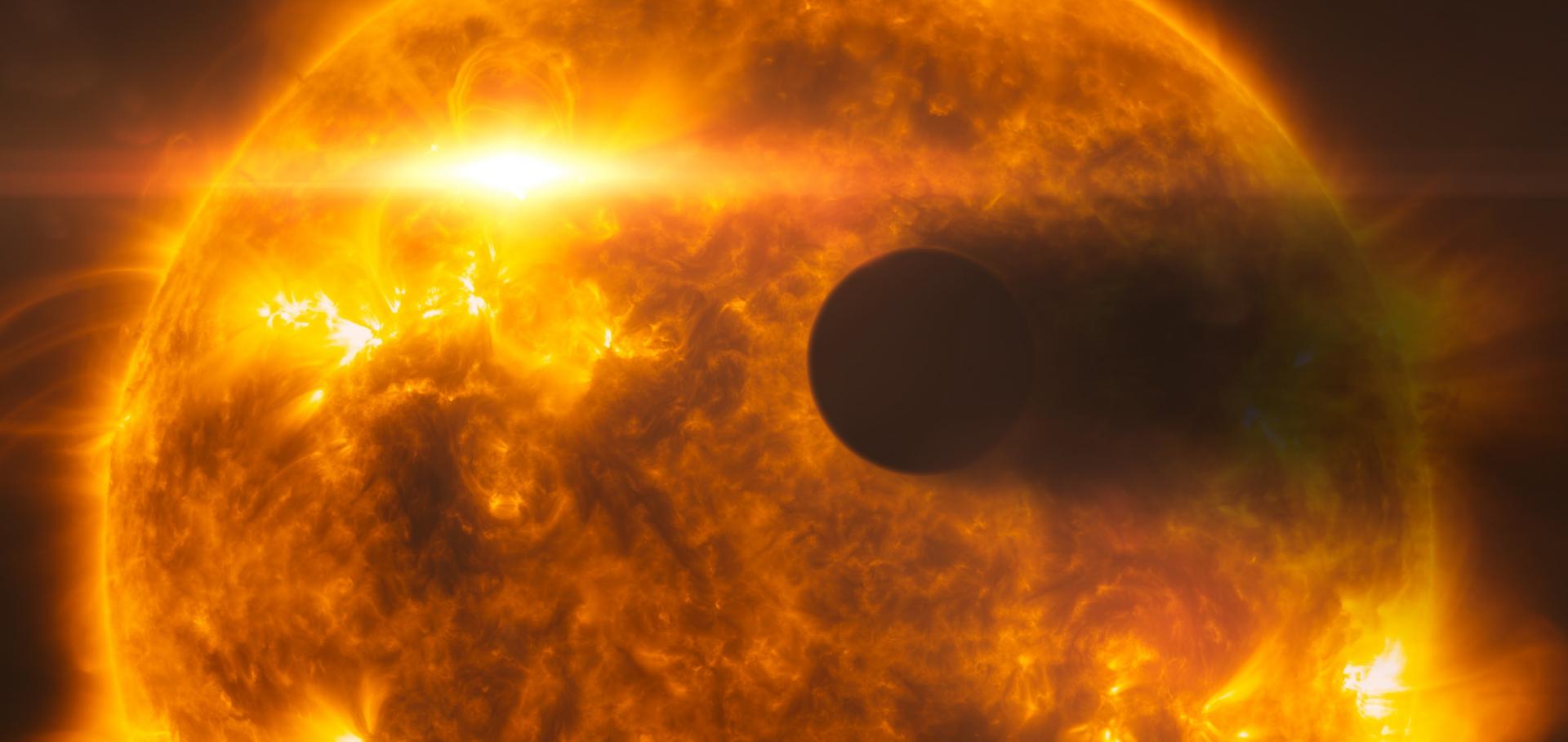One year of AU Mic with HARPS: II -- stellar activity and star-planet interaction
(2022)
The EXPRES Stellar Signals Project II. State of the field in disentangling photospheric velocities
Astronomical Journal American Astronomical Society 163:4 (2022) 171
Abstract:
Measured spectral shifts due to intrinsic stellar variability (e.g., pulsations, granulation) and activity (e.g., spots, plages) are the largest source of error for extreme-precision radial-velocity (EPRV) exoplanet detection. Several methods are designed to disentangle stellar signals from true center-of-mass shifts due to planets. The Extreme-precision Spectrograph (EXPRES) Stellar Signals Project (ESSP) presents a self-consistent comparison of 22 different methods tested on the same extreme-precision spectroscopic data from EXPRES. Methods derived new activity indicators, constructed models for mapping an indicator to the needed radial-velocity (RV) correction, or separated out shape- and shift-driven RV components. Since no ground truth is known when using real data, relative method performance is assessed using the total and nightly scatter of returned RVs and agreement between the results of different methods. Nearly all submitted methods return a lower RV rms than classic linear decorrelation, but no method is yet consistently reducing the RV rms to sub-meter-per-second levels. There is a concerning lack of agreement between the RVs returned by different methods. These results suggest that continued progress in this field necessitates increased interpretability of methods, high-cadence data to capture stellar signals at all timescales, and continued tests like the ESSP using consistent data sets with more advanced metrics for method performance. Future comparisons should make use of various well-characterized data sets—such as solar data or data with known injected planetary and/or stellar signals—to better understand method performance and whether planetary signals are preserved.The young HD 73583 (TOI-560) planetary system: two 10-M-circle plus mini-Neptunes transiting a 500-Myr-old, bright, and active K dwarf
Monthly Notices of the Royal Astronomical Society Oxford University Press 514:2 (2022) 1606-1627
Abstract:
We present the discovery and characterization of two transiting planets observed by TESS in the light curves of the young and bright (V = 9.67) star HD73583 (TOI-560). We perform an intensive spectroscopic and photometric space-and ground-based follow-up in order to confirm and characterize the system. We found that HD73583 is a young (∼500 Myr) active star with a rotational period of 12.08 ± 0.11 d, and a mass and radius of 0.73 ± 0.02 M and 0.65 ± 0.02 R, respectively. HD 73583 b (Pb = 6.3980420-0.0000062+ 0.0000067 d) has a mass and radius of 10.2-3.1+ 3.4 M and 2.79 ± 0.10 R, respectively, which gives a density of 2.58-0.81+ 0.95 g, cm-3. HD 73583 c (Pc = 18.87974-0.00074+ 0.00086 d) has a mass and radius of 9.7-1.7+ 1.8 M and 2.39-0.09+ 0.10 R, respectively, which translates to a density of 3.88-0.80+ 0.91g, cm-3. Both planets are consistent with worlds made of a solid core surrounded by a volatile envelope. Because of their youth and host star brightness, they both are excellent candidates to perform transmission spectroscopy studies. We expect ongoing atmospheric mass-loss for both planets caused by stellar irradiation. We estimate that the detection of evaporating signatures on H and He would be challenging, but doable with present and future instruments.Applications of a Gaussian process framework for modelling of high-resolution exoplanet spectra
Monthly Notices of the Royal Astronomical Society Oxford University Press 512:2 (2022) 2604-2617
Abstract:
Observations of exoplanet atmospheres in high resolution have the potential to resolve individual planetary absorption lines, despite the issues associated with ground-based observations. The removal of contaminating stellar and telluric absorption features is one of the most sensitive steps required to reveal the planetary spectrum and, while many different detrending methods exist, it remains difficult to directly compare the performance and efficacy of these methods. Additionally, though the standard cross-correlation method enables robust detection of specific atmospheric species, it only probes for features that are expected a priori. Here, we present a novel methodology using Gaussian process (GP) regression to directly model the components of high-resolution spectra, which partially addresses these issues. We use two archival CRyogenic Infra-Red Echelle Spectrograph (CRIRES)/Very Large Telescope (VLT) data sets as test cases, observations of the hot Jupiters HD 189733 b and 51 Pegasi b, recovering injected signals with average line contrast ratios of ∼4.37 × 10-3 and ∼1.39 × 10-3, and planet radial velocities ΔKp = 1.45 ± 1.53 km s-1 and ΔKp = 0.12 ± 0.12 km s-1 from the injection velocities, respectively. In addition, we demonstrate an application of the GP method to assess the impact of the detrending process on the planetary spectrum, by implementing injection-recovery tests. We show that standard detrending methods used in the literature negatively affect the amplitudes of absorption features in particular, which has the potential to render retrieval analyses inaccurate. Finally, we discuss possible limiting factors for the non-detections using this method, likely to be remedied by higher signal-to-noise data.One year of AU Mic with HARPS: I-measuring the masses of the two transiting planets
Monthly Notices of the Royal Astronomical Society Oxford University Press 512:2 (2022) 3060-3078


